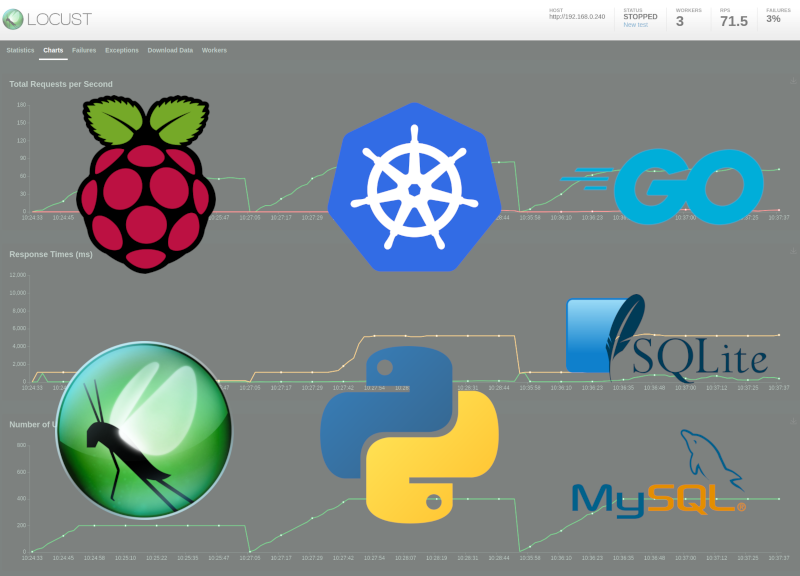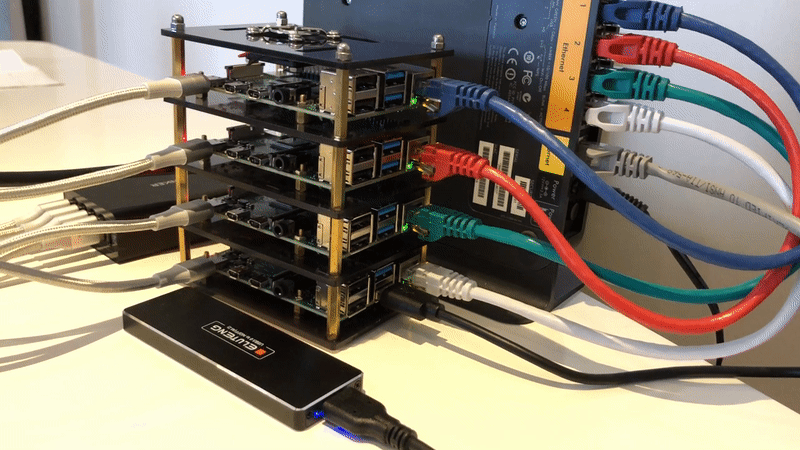Raspberry Pi Cluster Part 3: Running Load Tests with Kubernetes and Locust
This post details how I used a Python based load test framework (Locust) to perform some simple tests on an HTTP API application using Kubernetes in my Raspberry Pi Cluster.

This post details how I used a Python based load test framework (Locust) to perform some simple tests on an HTTP API application using Kubernetes in my Raspberry Pi Cluster.

In this post I go over how I set up my Kubernetes cluster across four Raspberry Pi 4 nodes using k3s, configured persistent storage using NFS, and then installed a simple “todo” API into the cluster using Helm.

I decided to build a Raspberry Pi cluster to give me a platform with which I can practice distributed computing technologies without needing to rely on a cloud provider.
This first post details my hardware set-up as well as how I used Ansible to “remote control” the installation of monitoring software on each of the Pi hosts, with the goal to observe the Raspberry Pi CPU temperatures.
Diskplayer is an audio device which uses physical media to play streaming music with 3.5” floppy disks and Spotify. You can find a GitHub repo with code here: https://github.com/dinofizz/diskplayer and a video showing playback and record activity here: https://youtu.be/1usBGe_ZiGc
[2020-06-21] I have done another run through of this tutorial on my Rasperry Pi 3, this time with the latest Raspberry Pi OS. Changes made to the tutorial are indicated with a note featuring a timestamp “[2020-06-21]”. Let me know in the comments if you are unsuccessful. I try to re-run everything every 6 months or so.
[2019-08-03] I have since updated this post with new instructions for running mitmproxy on Raspbian Buster, which now includes Python 3.7.
In preparation for a training session I will be giving on public key infrastructure (with a focus on TLS and certificates) I wanted to demonstrate how a transparent “man-in-the-middle” (MITM) proxy works.
This post walks through the configuration of a Raspberry Pi 3 acting as a Wi-Fi access point, running a transparent man-in-the-middle proxy (mitmproxy), which can be used to sniff HTTP and https traffic on connected devices.
This is part 4 of a 4 part series of articles where I explain how I discovered and purchased my laptop by building a web application which scrapes a local PC parts forum and sends automated email alerts when posts featuring specific keywords appear:
CarbAlert on GitHub: https://github.com/dinofizz/carbalert
As part of my quest to learn new things I wanted to deploy my CarbAlert solution using Docker and Docker Compose. Docker Compose is well suited to this application as it enables a group of related Docker containers to be built and deployed together.